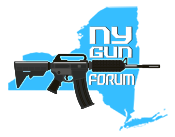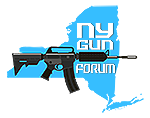livingston
20×102mm Vulcan
When the Nazis Came for the Guns
Even at age 90, Helga Lustig vividly remembers when she first heard the news that her father had been taken away by the Nazis.
It was 1938, and she was safely ensconced in a boarding school in Holland just across the border from Germany. Her parents had never planned to send her and her sister to any school so far away, but they did it as a precautionary measure. Just in case. Just in case the local Nazis in her hometown of Wesel, Germany expelled the girls from school or made their lives so unbearable that they couldn't attend.
Her parents knew they couldn't shield them from the Nazi encroachment, so they sent them out of Germany. They were totally defenseless against the Nazis, and when they finally came, they came first for Helga's father.
Kristallnacht, the Night of the Broken Glass, spread like a wave across Germany. It was the first major salvo in state-sponsored terror by the German government against Germans, specifically German Jews. In one night, Nazi paramilitary hordes destroyed over 1,000 synagogues and 7,000 Jewish businesses, murdered around 100 Jews, and carted off 30,000 or more Jewish men to concentration camps. Helga's father was among them.
By the time the Nazi Party launched a concerted nationwide attack upon the Jews, there was nothing the Jews could do. The time for defending themselves had long since passed.
Helga's father certainly couldn't fight back. A year before, they had come for his guns. Since he had been a German officer in the Kaiser's army in the Great War, the Nazis assumed, erroneously, it turned out, that he had at least kept his sidearm. They relented on his traditional officer's sword, reasoning that it was no match for bullets anyway.
The Nazis had in their possession a national registry of gun-owners. When they came to power in 1933, they knew exactly who had what kind of gun and how many. And they didn't even have to compile the registry themselves. A few years earlier, the Interior Minister of the German Weimar government had started the gun ownership registry as a way of keeping tabs on extremist groups in Germany, such as the communists...and the Nazis. The national registry was thorough, precise, and extensive. But not public. The Weimar interior minister was wary of it falling into the wrong hands, like those of the Nazi extremists he warned of.
Shortly afterward, with the Nazis finally coming to power, he and his staff either neglected to destroy the list or ran out of time. So in one of their first acts after Hitler was elected to govern Germany – yes, he really was elected by the German people – the Nazis quickly went about confiscating the guns through the German gun-owner registry.
The gun confiscation was highly selective. The Nazis allowed their loyal minions to keep their guns and even encouraged them to get more. Those Germans deemed suspect, or declared enemies of the state, had their guns confiscated. After the Nazis disarmed the rival communists, they targeted the Jews. Within a year they had visited the homes and shops of every Jewish gun owner in Germany and taken away their guns.
The Nazis were nervous about any of their real or imagined domestic enemies shooting back at them. They were especially nervous about the Jews, paranoid to the point where even after they confiscated the guns of all the registered Jewish gun-owners, they still went after the Jewish war veterans. This is why they ended up at Helga's home in Wesel in 1937.
Thus, when the Kristallnacht rampage happened a year later, the Jews didn't shoot a single bullet in self-defense because they didn't have any guns to shoot with. The Nazis had made sure of it.
Of the 30,000 defenseless Jewish men rounded up that night, only a few survived to the end of the war. How many would have lived had they been armed when the Nazis came for them? We can never know. Yet we can a least surmise that it would have been more than a few, probably many more.
The Nazi security forces certainly had an endless supply of firearms and the power of the state behind them. But picture an armed German Jewish resistance network in 1938. Word gets around that the Nazis are coming for the Jews. They load their guns and concoct a last ditch-effort to fend them off, allowing more Jews to escape through an Underground Jewish Railroad type of network. They shoot a lot of Nazis in the process and buy enough time for the rest to make it the borders of those still at peace neighboring countries.
Even if the Jews weren't so organized, it's still infinitely better to go down shooting, taking as many Nazis with them as possible. And there'd always be some who'd live to tell the tale.
Read more: https://www.americanthinker.com/articles/2018/04/when_the_nazis_came_for_the_guns.html#ixzz5CZ4ua4Ff
Follow us: @AmericanThinker on Twitter | AmericanThinker on Facebook
Even at age 90, Helga Lustig vividly remembers when she first heard the news that her father had been taken away by the Nazis.
It was 1938, and she was safely ensconced in a boarding school in Holland just across the border from Germany. Her parents had never planned to send her and her sister to any school so far away, but they did it as a precautionary measure. Just in case. Just in case the local Nazis in her hometown of Wesel, Germany expelled the girls from school or made their lives so unbearable that they couldn't attend.
Her parents knew they couldn't shield them from the Nazi encroachment, so they sent them out of Germany. They were totally defenseless against the Nazis, and when they finally came, they came first for Helga's father.
Kristallnacht, the Night of the Broken Glass, spread like a wave across Germany. It was the first major salvo in state-sponsored terror by the German government against Germans, specifically German Jews. In one night, Nazi paramilitary hordes destroyed over 1,000 synagogues and 7,000 Jewish businesses, murdered around 100 Jews, and carted off 30,000 or more Jewish men to concentration camps. Helga's father was among them.
By the time the Nazi Party launched a concerted nationwide attack upon the Jews, there was nothing the Jews could do. The time for defending themselves had long since passed.
Helga's father certainly couldn't fight back. A year before, they had come for his guns. Since he had been a German officer in the Kaiser's army in the Great War, the Nazis assumed, erroneously, it turned out, that he had at least kept his sidearm. They relented on his traditional officer's sword, reasoning that it was no match for bullets anyway.
The Nazis had in their possession a national registry of gun-owners. When they came to power in 1933, they knew exactly who had what kind of gun and how many. And they didn't even have to compile the registry themselves. A few years earlier, the Interior Minister of the German Weimar government had started the gun ownership registry as a way of keeping tabs on extremist groups in Germany, such as the communists...and the Nazis. The national registry was thorough, precise, and extensive. But not public. The Weimar interior minister was wary of it falling into the wrong hands, like those of the Nazi extremists he warned of.
Shortly afterward, with the Nazis finally coming to power, he and his staff either neglected to destroy the list or ran out of time. So in one of their first acts after Hitler was elected to govern Germany – yes, he really was elected by the German people – the Nazis quickly went about confiscating the guns through the German gun-owner registry.
The gun confiscation was highly selective. The Nazis allowed their loyal minions to keep their guns and even encouraged them to get more. Those Germans deemed suspect, or declared enemies of the state, had their guns confiscated. After the Nazis disarmed the rival communists, they targeted the Jews. Within a year they had visited the homes and shops of every Jewish gun owner in Germany and taken away their guns.
The Nazis were nervous about any of their real or imagined domestic enemies shooting back at them. They were especially nervous about the Jews, paranoid to the point where even after they confiscated the guns of all the registered Jewish gun-owners, they still went after the Jewish war veterans. This is why they ended up at Helga's home in Wesel in 1937.
Thus, when the Kristallnacht rampage happened a year later, the Jews didn't shoot a single bullet in self-defense because they didn't have any guns to shoot with. The Nazis had made sure of it.
Of the 30,000 defenseless Jewish men rounded up that night, only a few survived to the end of the war. How many would have lived had they been armed when the Nazis came for them? We can never know. Yet we can a least surmise that it would have been more than a few, probably many more.
The Nazi security forces certainly had an endless supply of firearms and the power of the state behind them. But picture an armed German Jewish resistance network in 1938. Word gets around that the Nazis are coming for the Jews. They load their guns and concoct a last ditch-effort to fend them off, allowing more Jews to escape through an Underground Jewish Railroad type of network. They shoot a lot of Nazis in the process and buy enough time for the rest to make it the borders of those still at peace neighboring countries.
Even if the Jews weren't so organized, it's still infinitely better to go down shooting, taking as many Nazis with them as possible. And there'd always be some who'd live to tell the tale.
Read more: https://www.americanthinker.com/articles/2018/04/when_the_nazis_came_for_the_guns.html#ixzz5CZ4ua4Ff
Follow us: @AmericanThinker on Twitter | AmericanThinker on Facebook

